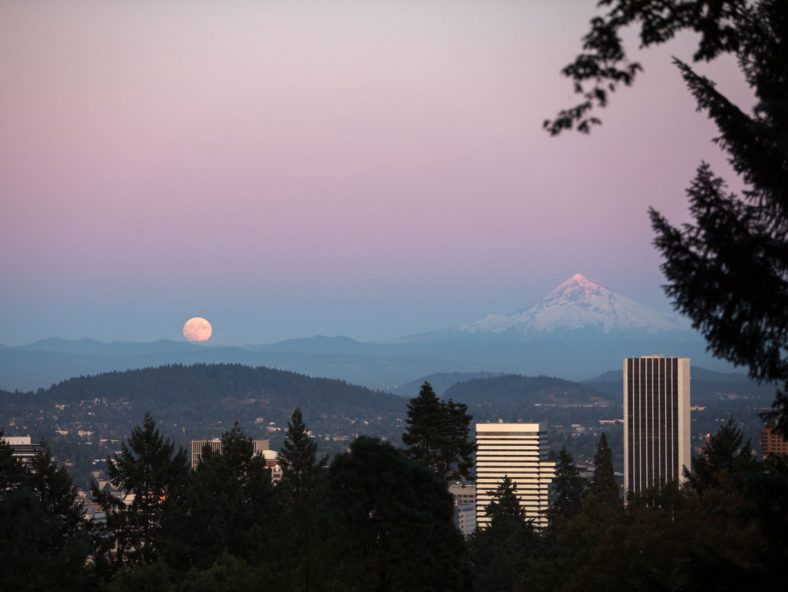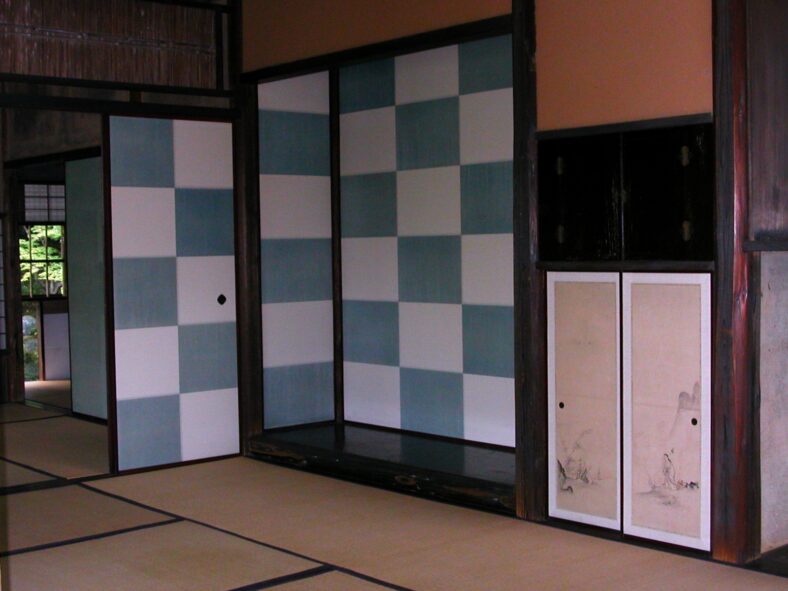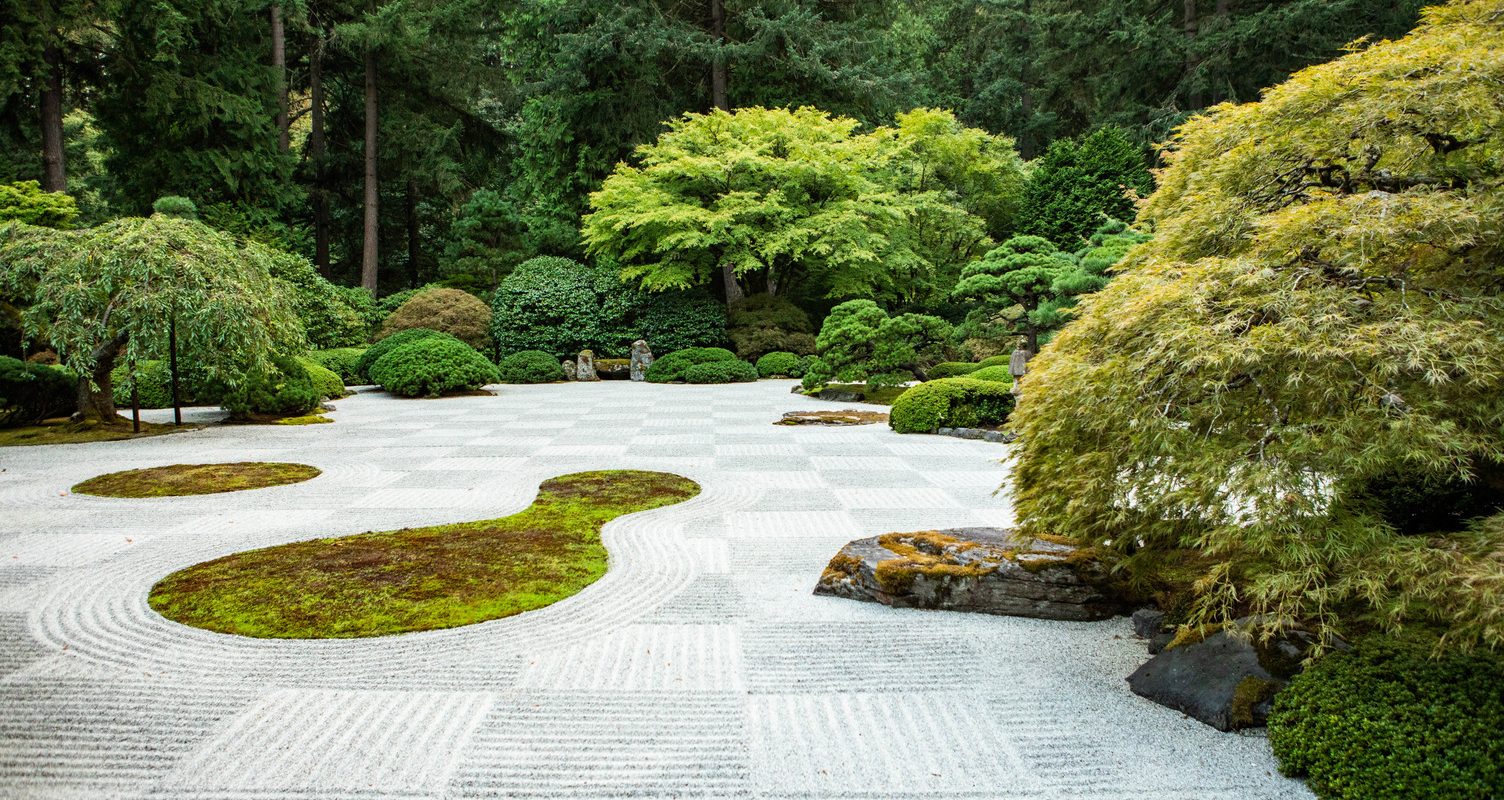Ichimatsu Pattern Raking During the Harvest Moon
Every year at the time of the Harvest Moon and our Moonviewing Festival, Portland Japanese Garden’s gardeners create this special checkered pattern, called ichimatsu moyo (市松模様), with the white sand in the Flat Garden.

Moonviewing, or O-Tsukimi in Japanese, is an annual festival and custom of gazing at the full moon and enjoying its sacred beauty.
This ichimatsu pattern raking was inspired by the Katsura Imperial Villa in Kyoto, Japan, the design of which is globally considered as the apex of the traditional Japanese approach on the use of space and refined simplicity. One of the tea houses at Katsura Imperial Villa (Shokin-tei) is known for its blue and white checker-patterned alcove walls and sliding screens, a design fairly modern for its time. Some even consider this quintessential to Katsura.
The Katsura village, where the villa stands, has long been known as a great moonviewing spot, and there are a number of references to the moon in the villa’s buildings and designs, including the Moonviewing Platform (Tsukimi Dai).

“From ancient times, Japanese people enjoyed various stages of the moon. Some preferred the rising moon while others enjoyed the morning moon. The act of waiting for the moon to rise from the east was often depicted in poetry and was considered even more beautiful and tasteful than the act of viewing the moon itself,” says Portland Japanese Garden’s Garden Curator, Hugo Torii.

